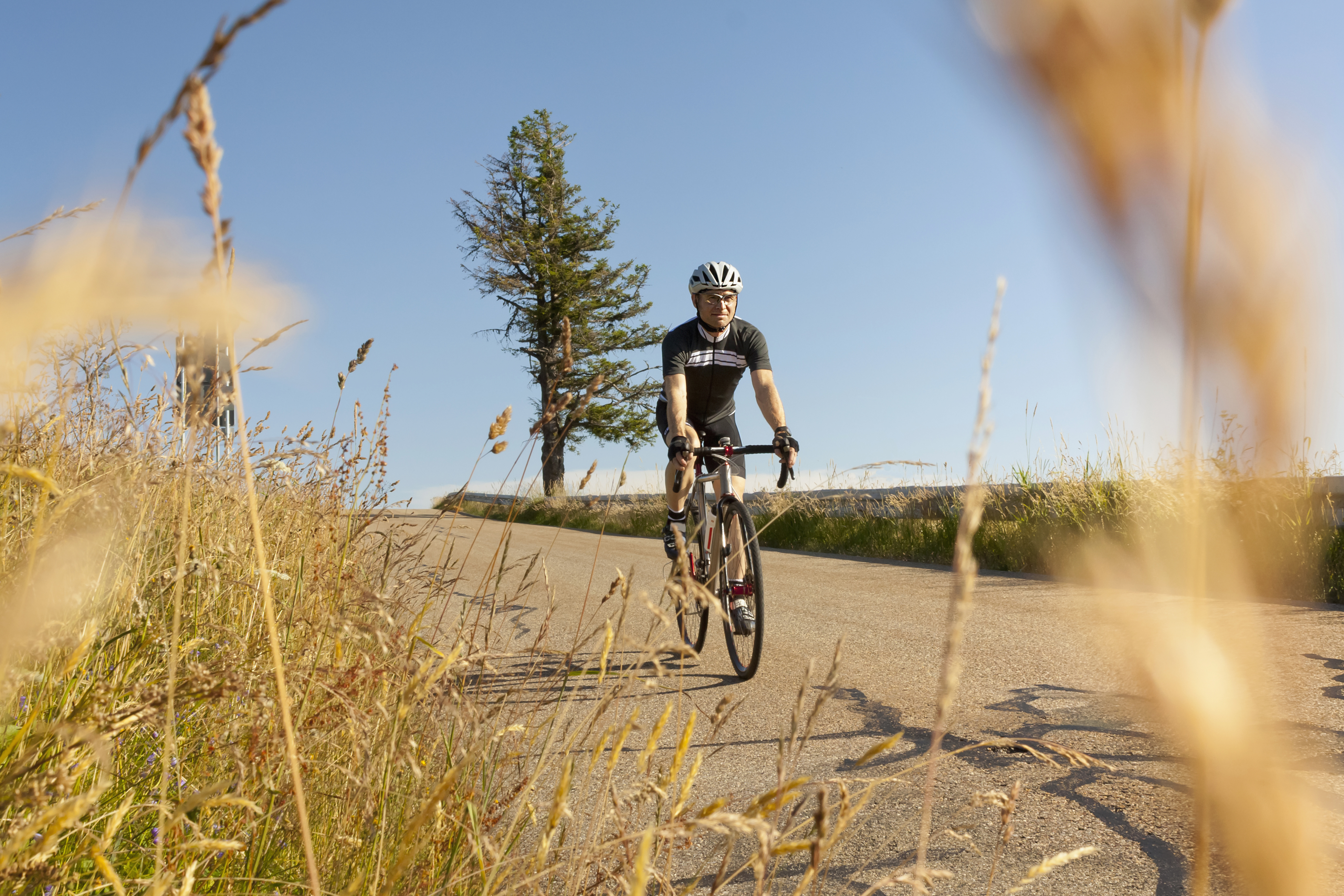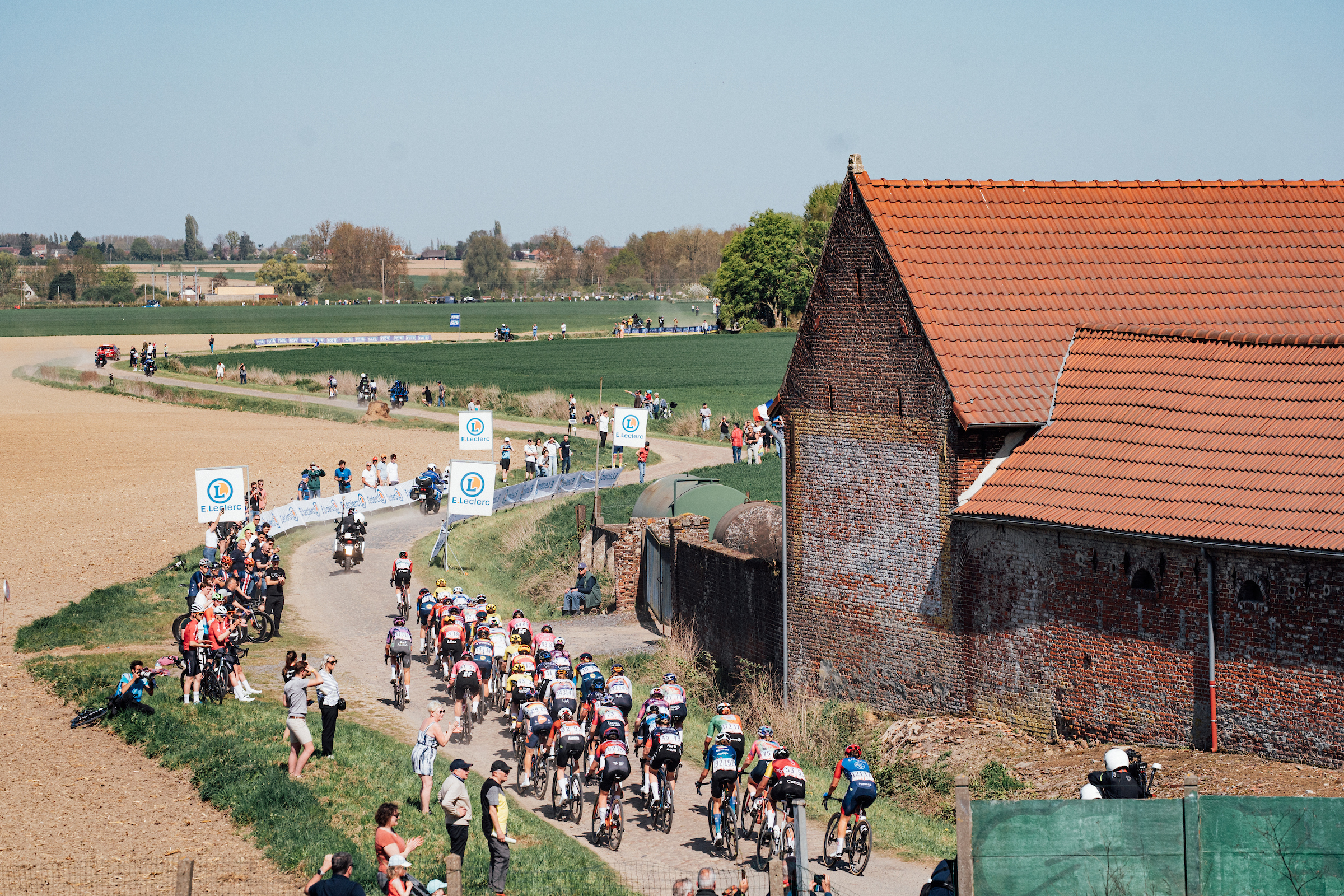Hayfever and your riding: how to combat it as the pollen strikes
Explanations, medications and holistic measures to make your spring and summer riding more enjoyable


As bike riders, that moment when cold, dank winter begins to recede and the sun takes over is always a special one. For many of us it's cause for rejoicing, particularly in the UK, where the big glowing orb in the sky chooses to absent itself in favour of wet grimness far too often.
However, while a lot of us get to watch the weather forecast warming up with a mental mini fist-pump, the rest are not quite so lucky. Forget the temperature – for hayfever sufferers the pollen count is also a key metric that can turn what otherwise looks like a beautiful day for riding into a nightmare no-go.
Hayfever season lasts for a good deal of the spring and summer, tending to begin in April and run all the way through until September.
What is hayfever?
As those who suffer from it will be well aware, hayfever is an allergy to plant pollen, but it isn't a one size fits all deal. Some sufferers might be more allergic to tree pollen, while others might suffer more at the hands of grass.
"It's an allergic reaction," explains hayfever expert Max Wiseberg of HayMax. "The body thinks that pollen is a bad thing – it's not, but it thinks it is – so its reaction to that is to produce loads of histamine. And histamines are the bad boys of allergy. They cause all the various reactions.
"Twenty-five per cent of the hayfever suffering population are allergic to tree pollen," Wiseberg says, "which will carry on till May, and then from mid-May, grass pollen starts. And 95% of the hay fever population are allergic to grass.
"That's a UK figure, but it's probably similar globally," he adds.
Get The Leadout Newsletter
The latest race content, interviews, features, reviews and expert buying guides, direct to your inbox!
Hayfever symptoms can be fairly wide-ranging. Many aren't dissimilar to those of the common cold, with runny nose, streaming eyes, headache and tiredness all common. Sufferers can also experience itchiness in the throat, mouth, nose and eyes, and even come out in hives. Most seriously it can also trigger asthma.
How does hayfever affect my riding?
Given that cycling is an outdoor sport that puts the rider front and centre on mother nature's stage, it will be unsurprising to learn that cycling can make symptoms more severe.
"It's a big deal for cyclists because, you know, you're cycling through the countryside and hoovering it up into your body," Wiseberg says. "And so it's probably worse than walking, or just hanging around, because you're getting even more pollen into you."
When out on the bike, not only are you breathing in a lot of allergens, you are also trapping them on your clothing and in your hair, meaning that they will follow you indoors once you get back from the ride to seek solace in your home.
What can I do about it?
Pharmaceutical treatments
These come in the form of antihistamines, steroidal nasal sprays and eye drops, which can be very effective for some – but not for others: "There are lots of people for whom nothing works [individually]," says Wiseberg.
There are other medical treatments too – the NHS in the UK offers immunotherapy in some areas, involving pollen injections or tablets.
For many allergy sufferers, over the counter antihistamines such as ceterazine, fexofenadine or chlorphenamine (Piriton) are the first line of defence that many find helpful.
However, some users can suffer drowsiness with antihistamines, and Wiseberg warns: "If you're drowsy, then you mustn't drive and you shouldn't ride a bicycle, because your reactions… everything's not working properly.
"The reason for that, by the way, is that the histamines are the things in your head which keep you alert and attentive and awake. So when you 'anti' the histamine, that's why it can make you drowsy, and make you less alert, less attentive. It's literally driving under the influence of drugs."
Non-pharmaceutical remedies
There are a number of non-pharmaceutical aids that riders can use to add new lines of defence in their armoury against hayfever.
Many use a barrier balm – of which HayMax is one – which is applied to the nostrils and eyes to help trap pollen before it enters the body.
"Like everything with allergy, prevention is key," Wiseberg says. "So if you stop stuff going up your nose, that's going to make a big difference."
In addition, Wiseberg suggests an acupressure band worn around the arm could help.
For bike riders, there are more easy wins available. Close-fitting shades, perhaps even with a face-hugging gasket, will go a long way to keeping the pollen out of eyes, for example.
And another must-do, says Wiseberg, is to ditch clothing as far as possible at the door when you return from your ride, preventing it from distributing allergens around your home as you walk through it. Similarly, showering as soon as possible to wash pollen from your skin and hair is another must-do.
Unfortunately, as many bike-riding hayfever sufferers will already know, attempting to avoid pollens by not riding near trees for example is usually too simplistic an approach.
"Trees and grass are wind pollinated," Wiseberg says. "Because of that, you can be a long way away from the source, and it can still be hitting you. So riding down an avenue of trees where they're flowering would be a definite, no-no – you're making it much worse for yourself – but staying away won't necessarily save you from it."
If your hayfever symptoms prove stubborn, Wiseberg's chief recommendation is to take a multi-pronged approach by putting together what he calls a hayfever 'first aid kit', using a variety of treatments.
"What people tend to do is they say nothing works because they try an antihistamine that doesn't work; they try a steroid nasal spray that doesn't work – they try everything in succession. And actually, what you want to do is take it together," he says.
What you cannot do is take two antihistamines or two steroidal nasal sprays together, but you can layer one of each, Wiseberg says, and add some barrier balm, perhaps an acupressure band plus wraparound shades and you have what could be a potent toolkit against hayfever that will enable you to enjoy being outside more.
What we're saying
We asked staff members at Cycling Weekly about their experiences with hayfever and cycling, and what they found most useful to combat it. Here's what they said.

What sort of hayfever symptoms do you suffer from and how severe are they?
I tend to get the usual symptoms that most sufferers experience. It usually starts with itchy eyes, which can get quite red and sore, before I then start to sneeze and develop very minor breathing difficulties and a cough.
It can vary when that all starts, but this year it has been much earlier than normal. I've already started taking cetirizine which is a little bit unusual for me.
Does cycling make it worse?
Yes, it definitely makes it worse at the height of the warmer months. I find that cycling in the spring tends to be fine, although when we get to early June and into July I definitely notice differences.
Do you ever ditch a ride and stay indoors rather than suffer outside?
No is the simple answer. I really don't like indoor riding, I have never been into it at all and just don't see the point.
Part of the reason I enjoy cycling is getting out and exploring the landscape around me, even if that's just at home where I live in Oxfordshire. I don't like to miss out completely in the summer and I don't let my hayfever get in the way.
Having said that, I think there have been occasions when I was younger where I've skipped riding at points because of it. But now that I know much more about how to manage my symptoms then that's no longer necessary.
What measures do you find most effective?
I take one cetirizine tablet every morning after having breakfast. I also use a nasal spray twice a day, two puffs into each nostril in the morning and evening.
That was the medication recommended to me by my GP and it really helps. Mid-ride I'll also stop and wash my face with cold water in a cafe somewhere if I find my symptoms are starting to flare up.
I often find my face starts to feel really hot and itchy when it's getting bad and the cold water always helps to calm that down.
I also try to ride as early as possible in the summer so I'm avoiding the hottest part of the day when pollen is at its worst. I'm usually out no later than 8am for most rides during that period.

What sort of hayfever symptoms do you suffer from and how severe are they?
As long as I take an antihistamine - cetirizine being my go-to - my symptoms are pretty mild. But, if I forget to take that little white pill, I can find myself housebound during the spring and summer months.
The itchy, runny nose and swollen eyes can become unbearable, during my first flare-up (on a school playing field) I was sent to the medical office with a suspected case of very fast-onset conjunctivitis.
I'm always amazed at quite how effective the cetirizine tablets are for me. If the pollen count is particularly high, and it's not quite doing the job, I layer on a nasal spray and eye drops, these make a difference, but I find they're not effective enough on their own for me.
I'm currently 38 weeks pregnant, and relieved that the NHS advice is that, "Cetirizine can be taken in pregnancy. Although there's not a lot of information about its use in pregnancy, there's no suggestion that it will harm your baby," it would be reassuring if someone out there would do the research so we could remove the caveat, but, I took the medication during my first pregnancy to no ill harm and trust that it's safe.
Does cycling make it worse?
I always find that whilst on the bike, I'm fine. It's when I come indoors after a ride that symptoms flare up. I'm reliably informed that this is pretty common, and likely the result of taking off my glasses and rubbing my eyes, which makes sense.
I'm lucky in that I've never experienced severe symptoms such as tightness in my chest or wheezing, so I don't have to avoid hard efforts, climbing or anything else I'd like to do on the bike.
Do you ever ditch a ride and stay indoors rather than suffer outside?
No, absolutely not, but this will be because my symptoms are well under control with antihistamines.
What measures do you find most effective?
It's boring, but medication! A cetirizine tablet, backed up with Beconase nasal spray and Opticrom eye drops are where it's at.
Washing my hands and face straight after a ride definitely help, as do wrap-around sunglasses. I've tried the old Vaseline on the nose trick, and can't say I noticed any difference at all.

What symptoms do you suffer and how severe are they?
Itching of the face, nose and eyes. Rinitus; a streaming sensation in the eyes and nose, that makes your eyes puff up. Dry eyes. Red face. Sneezes, at least three a day, and more during an attack.
Does cycling make it worse?
Sunglasses help, wraparound ones. I think it’s a barrier. Riding doesn’t tend to make it worse, but it’s not pleasant riding in the middle of a bad spell.
Do you ever ditch a ride and stay indoors rather than suffer outside?
Yes, on a bad day it’s not pleasant to do anything except stay indoors.
What measures do you find most effective against it?
I take an antihistamine almost daily in the tree pollen season. The sprays are less helpful. Sunglasses are really helpful, and seem to stop my eyes drying out so quickly also.

Thank you for reading 20 articles this month* Join now for unlimited access
Enjoy your first month for just £1 / $1 / €1
*Read 5 free articles per month without a subscription

Join now for unlimited access
Try first month for just £1 / $1 / €1
After cutting his teeth on local and national newspapers, James began at Cycling Weekly as a sub-editor in 2000 when the current office was literally all fields.
Eventually becoming chief sub-editor, in 2016 he switched to the job of full-time writer, and covers news, racing and features.
A lifelong cyclist and cycling fan, James's racing days (and most of his fitness) are now behind him. But he still rides regularly, both on the road and on the gravelly stuff.
You must confirm your public display name before commenting
Please logout and then login again, you will then be prompted to enter your display name.
-
 I went to Paris-Roubaix Femmes and was shocked at how it is still treated as secondary to the men’s race
I went to Paris-Roubaix Femmes and was shocked at how it is still treated as secondary to the men’s raceThe women’s version of the Hell of the North is five years old, but needs to be put more on equal footing with the men
By Adam Becket
-
 Broken hips, hands, and collarbones: Paris-Roubaix's lengthy injury list lays bare brutality of race
Broken hips, hands, and collarbones: Paris-Roubaix's lengthy injury list lays bare brutality of race"It probably wasn't the best idea to continue," says one of weekend's many wounded riders
By Tom Davidson